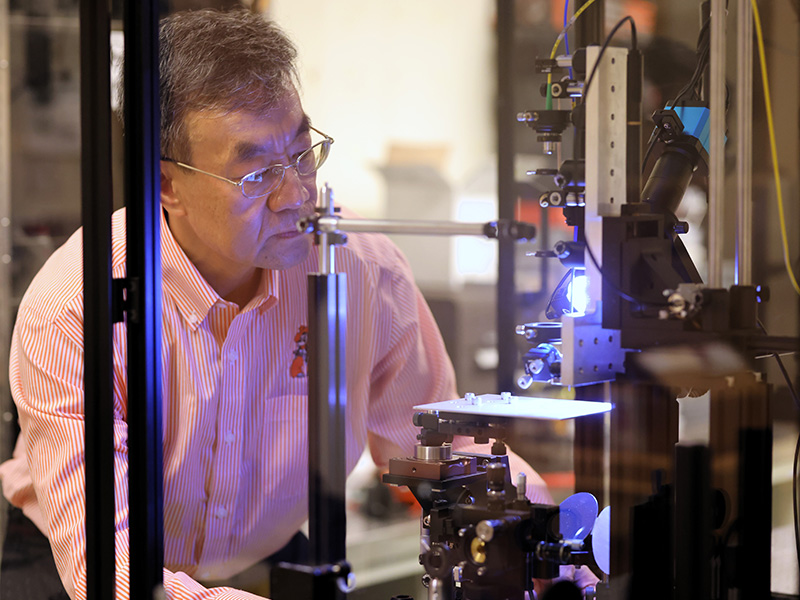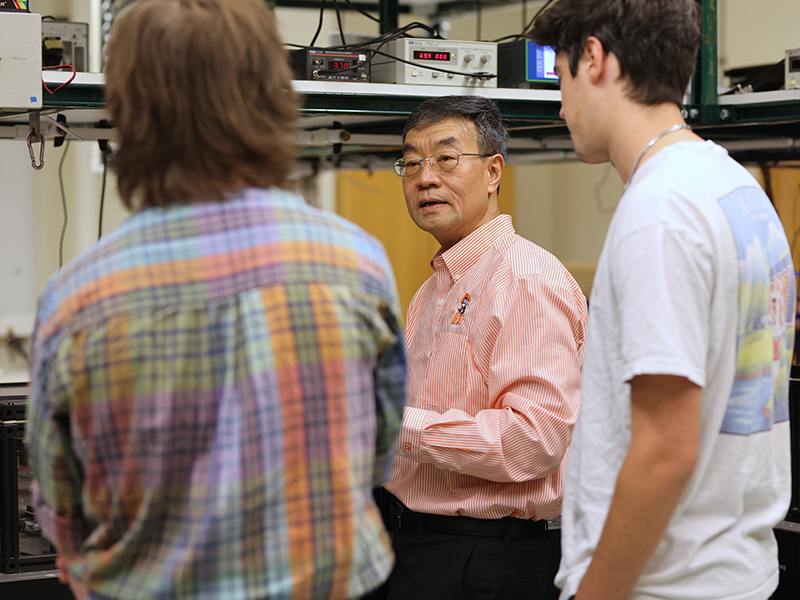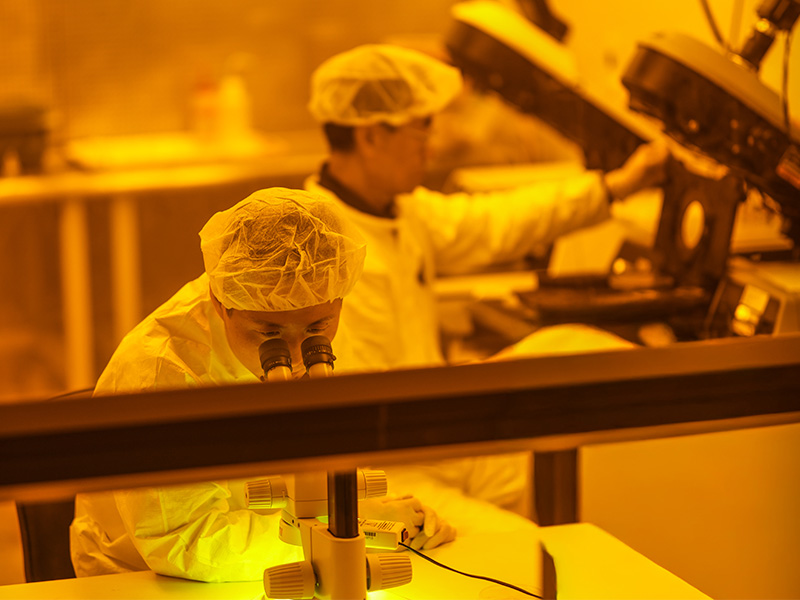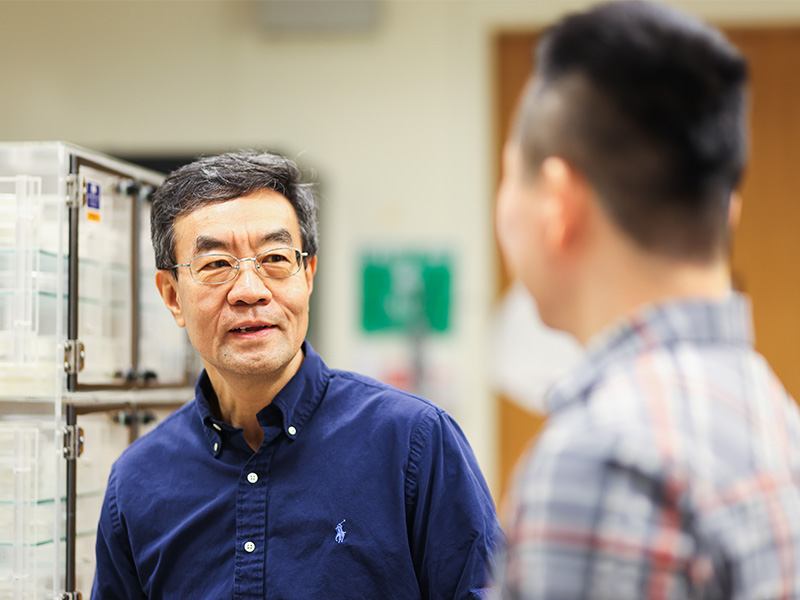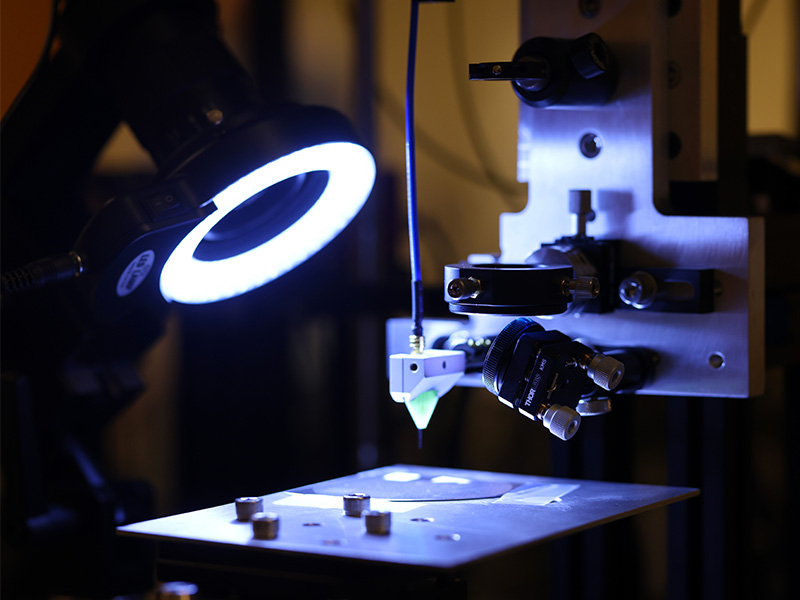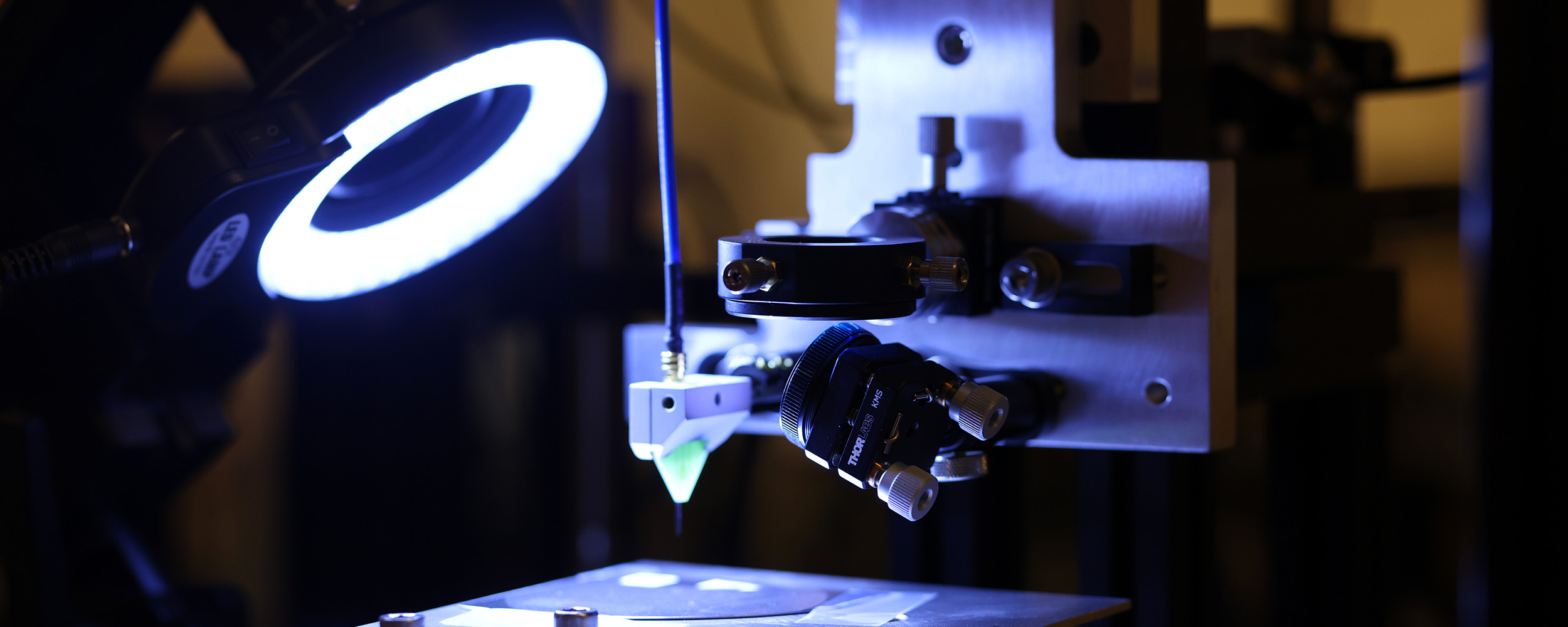
Bridging the Terahertz Gap: Dr. Weili Zhang advances the frontiers of light
Thursday, October 30, 2025
Media Contact: Kristi Wheeler | Manager, CEAT Marketing and Communications | 405-744-5831 | kristi.wheeler@okstate.edu
In a field where the boundaries of physics and engineering converge, Dr. Weili Zhang, Regents professor of electrical and computer engineering at Oklahoma State University, stands among the world’s foremost authorities on terahertz science and technology.
His work has fundamentally advanced how researchers generate, manipulate and apply electromagnetic waves that occupy the elusive spectrum between microwaves and infrared light — a region long referred to as the terahertz gap.
For more than two decades, Zhang has built a career defined by precision, persistence and innovation. His research integrates ultrafast optics, metamaterials and semiconductor photonics to reveal new methods of controlling light and matter at unprecedented scales. These advances have far-reaching implications across biomedical imaging, security sensing, communications and advanced materials.
After earning his bachelor’s, master’s and doctoral degrees in optical engineering from Tianjin University in China, he became a postdoctoral researcher at the Hong Kong University of Science and Technology and a faculty member at Tianjin University. In 2002, Zhang joined the faculty at OSU, where he established one of the nation’s leading research programs in terahertz optoelectronics.
Dr. Weili Zhang
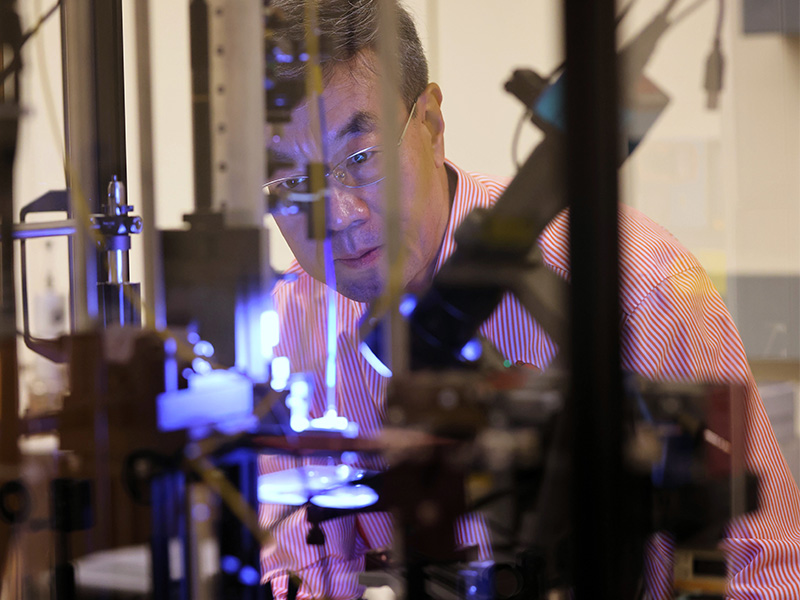
400+Peer-Reviewed Journal Articles
Honors: Clarivate Highly Cited Researcher in Physics (2019-2023), Optica Fellow, OSU Regents Distinguished Research Award
20KCitations: (Web of Science); ≈ 79
Research Applications: Biomedical sensing, Non-Destructive Imaging, High-Speed Communications, Advanced Materials
Terahertz waves — situated between microwave and infrared frequencies — possess unique capabilities. They can penetrate fabrics, plastics and biological tissues, yet they are non-ionizing and safe for use in sensitive environments. However, generating and manipulating terahertz radiation efficiently has long posed significant technical challenges.
Zhang’s research addresses those challenges head-on. By designing metamaterials and plasmonic structures capable of subwavelength control, his team has demonstrated innovative terahertz devices, including filters, modulators and imaging systems. These engineered materials manipulate electromagnetic waves in ways not achievable with conventional optics, opening doors to applications once considered beyond reach.
Zhang’s influence in the field is reflected in his prolific publication record and global recognition. With more than 400 peer-reviewed journal articles and over 20,000 citations, he has been named a Clarivate Highly Cited Researcher in Physics for five consecutive years (2019–2023), an honor reserved for the top 1 percent of researchers worldwide.
He is also a Fellow of Optica (formerly The Optical Society), recognized for his contributions to terahertz subwavelength photonics, plasmonics, metamaterials and invisibility cloaking. Within OSU, his work has earned multiple distinctions, including the Regents Distinguished Research Award.
Beyond his research, Zhang serves as an editor and reviewer for numerous international journals and conferences, helping to guide the direction of optics and photonics research globally.
What makes Zhang’s work stand out is its balance between fundamental exploration and technological impact. His team’s research on terahertz metamaterials provides a foundation for novel optical components that could revolutionize non-destructive testing, medical diagnostics and next-generation wireless communication.
His contributions also support broader national efforts in semiconductor and photonic integration, as industries seek faster, more compact and energy-efficient technologies. At OSU, Zhang’s laboratory has become a hub for multidisciplinary collaboration, bringing together engineers, physicists and material scientists to explore how engineered light can reshape the technological landscape.
As a Regents professor, Zhang is deeply committed to mentorship. He has guided dozens of graduate students and postdoctoral researchers, many of whom now hold positions in academia, research laboratories and high-technology industries worldwide.
His mentorship philosophy is grounded in rigor and curiosity.
"I believe that mentorship is about inspiring growth and fostering independence,” Zhang said. “It is not just about guiding others through challenges but empowering them to think creatively and pursue their own paths. I feel blessed to see that many of our former graduate students and postdocs have become well-established in their positions, and, in particular, four of them were recognized as Fellows of Optica."
The potential of terahertz science is vast, and Zhang shows no signs of slowing down. His continued work at the intersection of optics, materials and applied engineering is closing long-standing technological gaps and enabling discoveries that redefine how we understand and utilize the electromagnetic spectrum.
Through sustained innovation, scholarly excellence and visionary leadership, Zhang exemplifies the role of engineering in advancing the boundaries of science — transforming abstract theory into practical technology and turning invisible waves into visible progress.
Dr. Weili ZhangRegents Professor in the School of Electrical and Computer Engineering at Oklahoma State University
